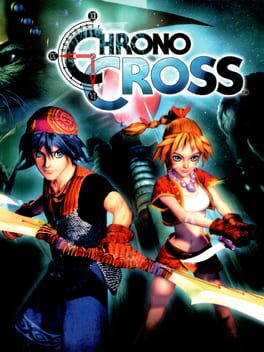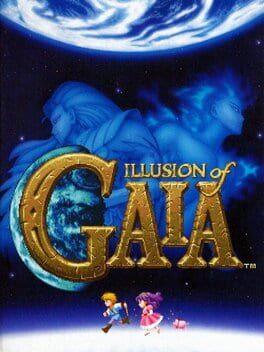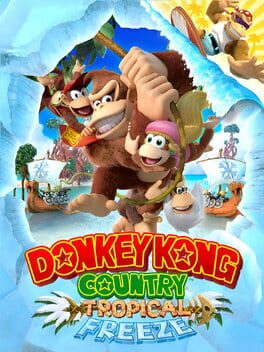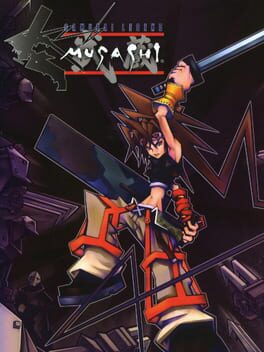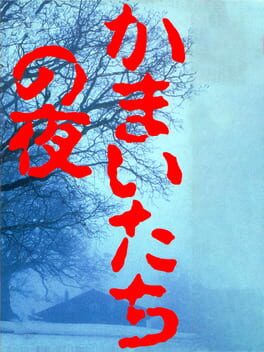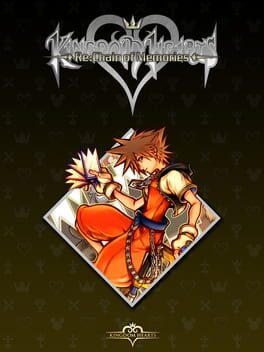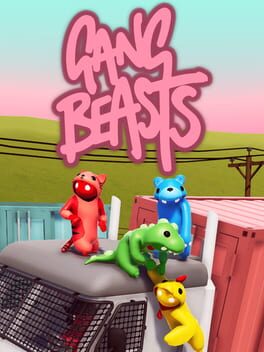GuiltClause
38 reviews liked by GuiltClause
Chrono Cross
1999
Illusion of Gaia
1993
Illusion of Gaia
1993
A great "fall from innocence" narrative in which the protagonist's emotional maturation is braided with his burgeoning understanding of the troubled planet he lives on. Even through the mangled translation, the game's intentions, and the aesthetically diverse vignette approach it uses to communicate them, are totally legible.
Super Mario Sunshine
2002
I'd like to know what type of crack Kojima was on when making this game, because I don't know how a man can write a game with such shitty writing and it still comes out amazing anyways.
You have many extremely long and tedious segments of exposition, forgettable side characters, a garbage underwater section combined with an escort mission, and a romance subplot so bad that its comparable to Anakin and Padme in the Star Wars prequels.
Yet at the same time, you have the most meaningful and profound ending to a videogame that I've seen, that actively took advantage of the medium of videogames in such a creative way in fucking 2001. Its even more impressive when you compare that to today, where so many big AAA game try their hardest to be movies and take themselves overtly seriously. The ending of Metal Gear Solid 2 is a small fraction of a 12 hour game with many questionable design and writing decisions, but that small fraction holds quite possibly the most value out of anything I've ever experienced in a videogame. This is a corny ass statement I'm making, but that final speech from Snake has left more of an impact on me than any thing I've ever been taught in school.
You have many extremely long and tedious segments of exposition, forgettable side characters, a garbage underwater section combined with an escort mission, and a romance subplot so bad that its comparable to Anakin and Padme in the Star Wars prequels.
Yet at the same time, you have the most meaningful and profound ending to a videogame that I've seen, that actively took advantage of the medium of videogames in such a creative way in fucking 2001. Its even more impressive when you compare that to today, where so many big AAA game try their hardest to be movies and take themselves overtly seriously. The ending of Metal Gear Solid 2 is a small fraction of a 12 hour game with many questionable design and writing decisions, but that small fraction holds quite possibly the most value out of anything I've ever experienced in a videogame. This is a corny ass statement I'm making, but that final speech from Snake has left more of an impact on me than any thing I've ever been taught in school.
My fondest memory of this game, was the hour I spent trying to complete the last 5 minute sequence cuz I had zero clue what the hell I was supposed to be doing. I thought I was watching some weird cutscene but no, it was some entirely unprecedented QTE sequence and I think it really sums up the attitude of the game.
Kamaitachi no Yoru
1994
This is the first visual novel I've ever played in Japanese. It was a challenge and I'm really proud of myself! I won't claim to have caught each and every nuance, but I understood all of the endings and the general cause and effect that led to them. What follows are some off-the-cuff reflections. I try not to center myself when writing about other people's art, but since so much of my experience with this was colored by my language learning process, it's kind of unavoidable here.
I quickly realized that this would be a great choice for me as an intermediate Japanese learner: because the scenario is relatively grounded, it's written in natural, unstylized language, unlike what you'd find in a JRPG or even other genre-inflected VNs. At the same time, though, it's not the stilted, repetitive prose I often see in guided readers or other texts for people at my level. There's a vested interest in making these characters sound like characters and in developing an organic internal monologue for Toru. Between that and the context clues granted by the sound and visuals, I was able to work outward from the main idea in numerous sentences to translate unfamiliar phrases or constructions based on my understanding of the storytelling. Finally, there's nothing too complex or esoteric going on with the story or most of the characters - just good, meat-and-potatoes crime thriller writing - and it's not a long VN. It would probably take a native reader about five hours to get all the canon endings.it took me ten times as long lmao
My method at the beginning was to read a few sentences, watch this Japanese playthrough to help me look up unfamiliar kanji without radical-hunting on Jisho, then check my work with this English translation. Both of these playthroughs make a beeline to the true ending almost immediately, however, and if you know anything about visual novels, you know that much of the fun and intrigue comes from stumbling through some of the bad endings first. So I forewent my crutches and braved all eight of the "failures" alone.
Although I struggled at first, and both my self-doubt and my time spent digging through Jisho increased significantly, this was the right choice. In VN tradition, I barreled headlong into the grimmest of the grim endings and was struck by the game's eerie hopelessness. Toru, your typical goofy hornt-up VN teen hero, flails around desperately trying to make sense of the situation, growing more paranoid, angry, and violent with each error he steps into. A scene in particular that landed for me was when one character is murdered and another, who seemingly had little interest in or connection to them, is overcome with anger and sadness, and Toru has a disorienting psychic episode where he realizes that he doesn't actually know anything about any of these people.¹ It's an intriguing moment for both characters made moreso by the VN's visual and musical accompaniments. Although the character silhouettes and the muted photographic backgrounds are beautiful, the music is really where this game shines. You lose out on A LOT of this if you go straight to the good endings; you don't even learn the murderer's motives. And though I had accepted early on that I would never be able to figure out who the killer was on my own, there's simply no way to do it without finding clues in the bad endings first unless you guess luckily or cheat.
After my first ending, I had a difficult time finding the others. I wasn't always confident about what I had previously read and needed to do differently, and the UI doesn't make it much easier, so I switched from the SNES version to the PSX. They are fundamentally similar (the PSX music isn't as good, too fussed-with maybe?), but the PSX has a flowchart. Blessed be! Seeing it all laid out as I worked through the rest, each little module linked together, really drove home how unlike Kamaitachi no Yoru was from anything else on the SNES in terms of atmosphere, subject matter, and narrative structure. Its influence is undeniable; the game was a big commercial hit, and both Ryukishi07 and Kotaro Uchikoshi² have acknowledged its impact on their work. It's been a white whale for me for a long time - I first read about it maybe twenty years ago - and the experience still surpassed my expectations. To enjoy something so dark and rich and see how plainly it influenced other works that are important to me was a true privilege and made me so excited about this medium's bountiful history!
TL;DR get you a girl who can perfectly execute a one-armed shoulder throw in a time of crisis.
¹Granted, this is my interpretation, based on my shaky Japanese. If it's wrong, feel free to embarrass me in the comments. <3
²One part of this presentation a few minutes earlier, where Uchikoshi talks about how Kamaitachi no Yoru "plants its flags in the player's memory," is especially interesting given the roles Sigma and Phi serve in Virtue's Last Reward, but he keeps the connection a bit broad, presumably to avoid spoilers. Also, listen to this bop and try to tell me that Shinji Hosoe isn't a fan too.
I quickly realized that this would be a great choice for me as an intermediate Japanese learner: because the scenario is relatively grounded, it's written in natural, unstylized language, unlike what you'd find in a JRPG or even other genre-inflected VNs. At the same time, though, it's not the stilted, repetitive prose I often see in guided readers or other texts for people at my level. There's a vested interest in making these characters sound like characters and in developing an organic internal monologue for Toru. Between that and the context clues granted by the sound and visuals, I was able to work outward from the main idea in numerous sentences to translate unfamiliar phrases or constructions based on my understanding of the storytelling. Finally, there's nothing too complex or esoteric going on with the story or most of the characters - just good, meat-and-potatoes crime thriller writing - and it's not a long VN. It would probably take a native reader about five hours to get all the canon endings.
My method at the beginning was to read a few sentences, watch this Japanese playthrough to help me look up unfamiliar kanji without radical-hunting on Jisho, then check my work with this English translation. Both of these playthroughs make a beeline to the true ending almost immediately, however, and if you know anything about visual novels, you know that much of the fun and intrigue comes from stumbling through some of the bad endings first. So I forewent my crutches and braved all eight of the "failures" alone.
Although I struggled at first, and both my self-doubt and my time spent digging through Jisho increased significantly, this was the right choice. In VN tradition, I barreled headlong into the grimmest of the grim endings and was struck by the game's eerie hopelessness. Toru, your typical goofy hornt-up VN teen hero, flails around desperately trying to make sense of the situation, growing more paranoid, angry, and violent with each error he steps into. A scene in particular that landed for me was when one character is murdered and another, who seemingly had little interest in or connection to them, is overcome with anger and sadness, and Toru has a disorienting psychic episode where he realizes that he doesn't actually know anything about any of these people.¹ It's an intriguing moment for both characters made moreso by the VN's visual and musical accompaniments. Although the character silhouettes and the muted photographic backgrounds are beautiful, the music is really where this game shines. You lose out on A LOT of this if you go straight to the good endings; you don't even learn the murderer's motives. And though I had accepted early on that I would never be able to figure out who the killer was on my own, there's simply no way to do it without finding clues in the bad endings first unless you guess luckily or cheat.
After my first ending, I had a difficult time finding the others. I wasn't always confident about what I had previously read and needed to do differently, and the UI doesn't make it much easier, so I switched from the SNES version to the PSX. They are fundamentally similar (the PSX music isn't as good, too fussed-with maybe?), but the PSX has a flowchart. Blessed be! Seeing it all laid out as I worked through the rest, each little module linked together, really drove home how unlike Kamaitachi no Yoru was from anything else on the SNES in terms of atmosphere, subject matter, and narrative structure. Its influence is undeniable; the game was a big commercial hit, and both Ryukishi07 and Kotaro Uchikoshi² have acknowledged its impact on their work. It's been a white whale for me for a long time - I first read about it maybe twenty years ago - and the experience still surpassed my expectations. To enjoy something so dark and rich and see how plainly it influenced other works that are important to me was a true privilege and made me so excited about this medium's bountiful history!
TL;DR get you a girl who can perfectly execute a one-armed shoulder throw in a time of crisis.
¹Granted, this is my interpretation, based on my shaky Japanese. If it's wrong, feel free to embarrass me in the comments. <3
²One part of this presentation a few minutes earlier, where Uchikoshi talks about how Kamaitachi no Yoru "plants its flags in the player's memory," is especially interesting given the roles Sigma and Phi serve in Virtue's Last Reward, but he keeps the connection a bit broad, presumably to avoid spoilers. Also, listen to this bop and try to tell me that Shinji Hosoe isn't a fan too.
